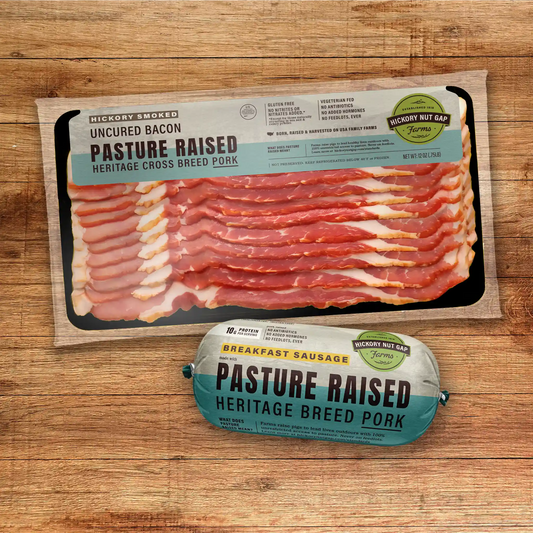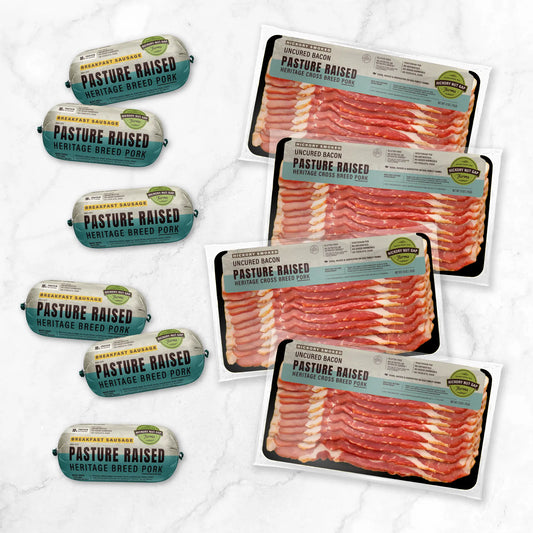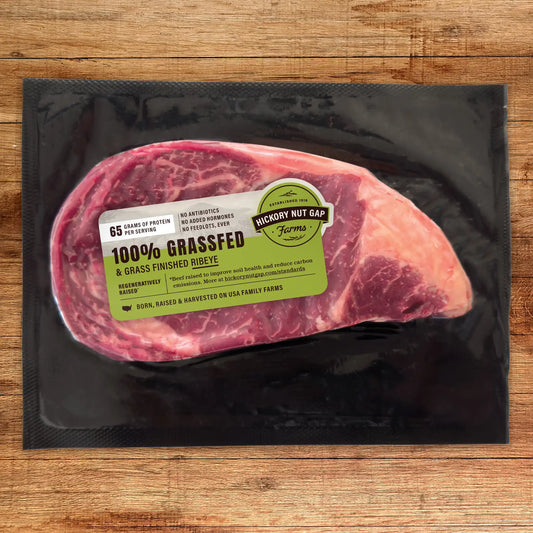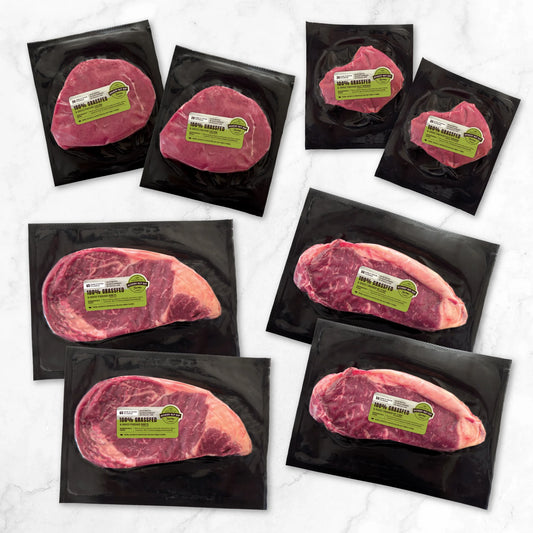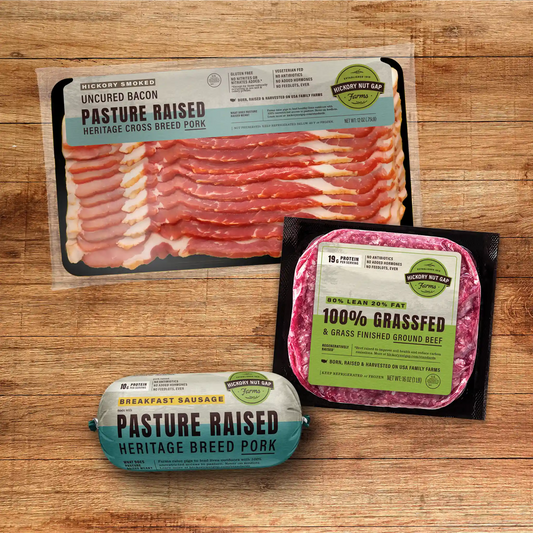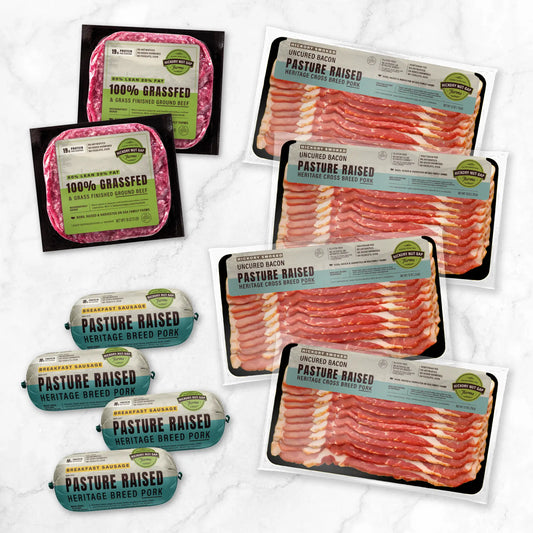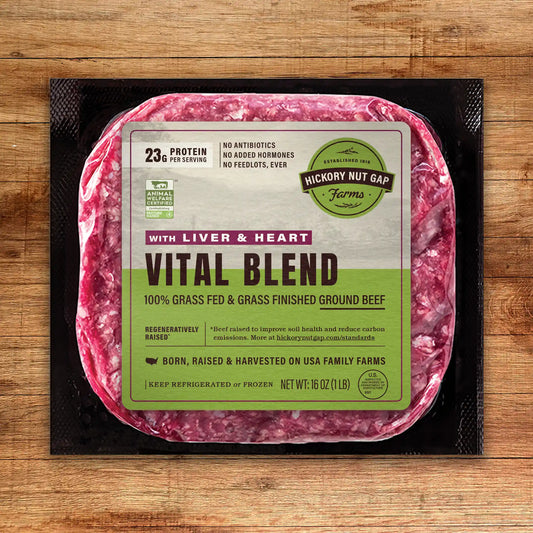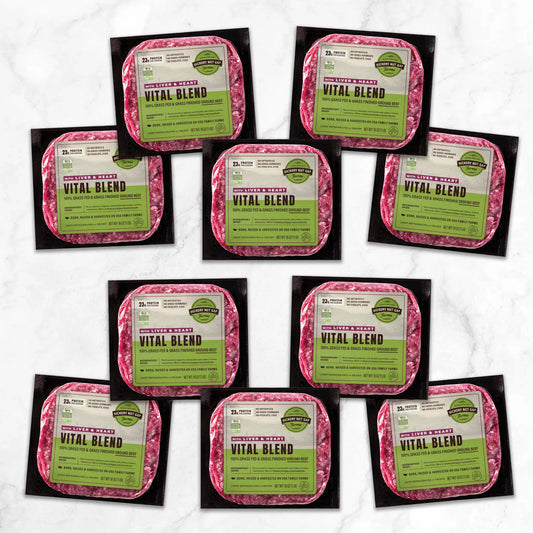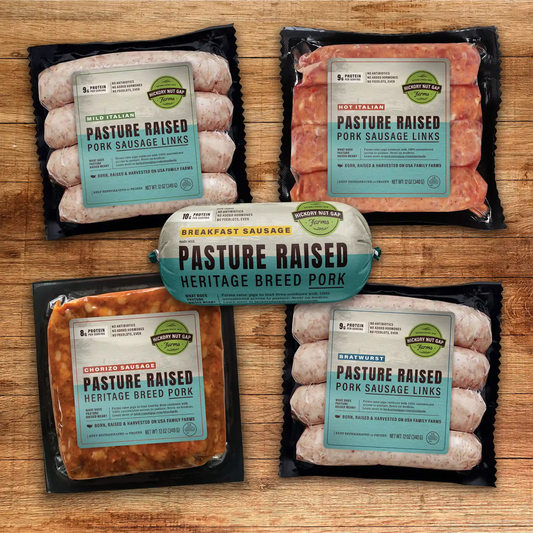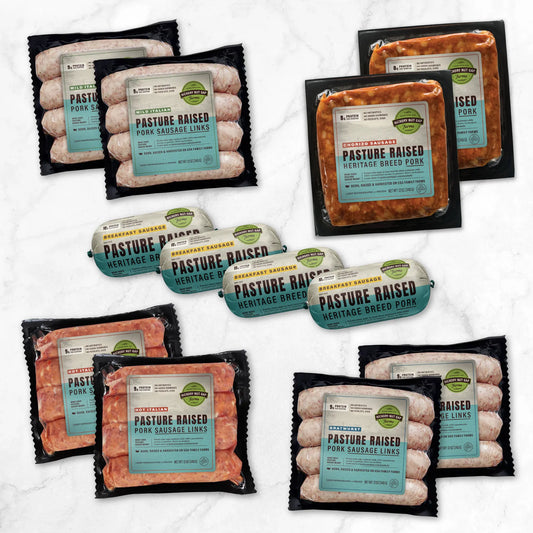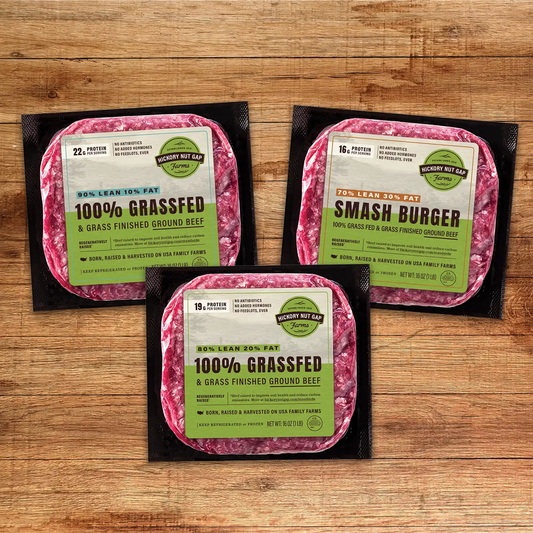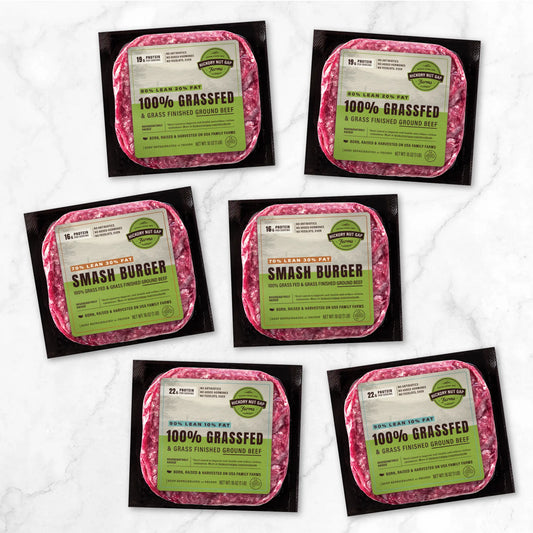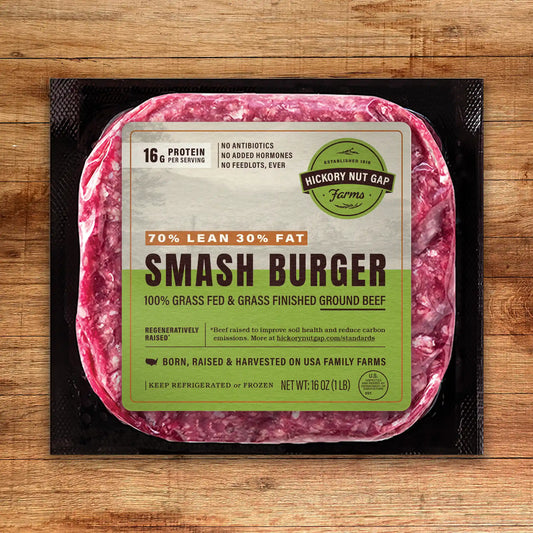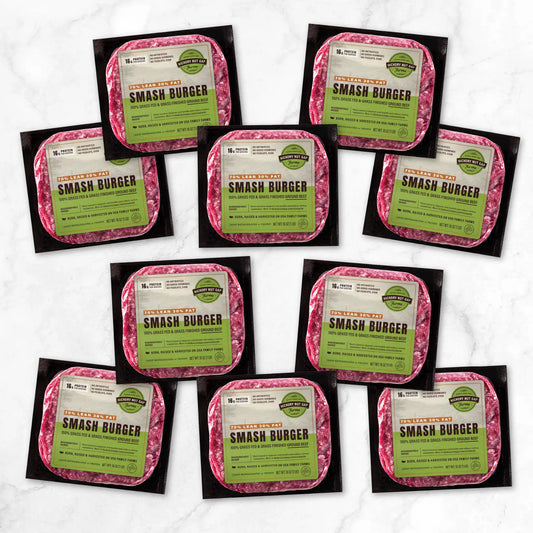Collection: Curated Boxes
-
Sausage & Bacon Breakfast Bundle
Regular price $148.00 USDRegular price -
Grassfed Steak Sampler
Regular price $193.00 USDRegular price -
The HNG Classics
Regular price $126.00 USDRegular price -
100% Grassfed Beef Vital Blend with Heart & Liver (10 lbs)
Regular price $134.00 USDRegular price -
Pasture Raised Pork Sausage Sampler
Regular price $99.00 USDRegular price -
100% Grassfed Ground Beef Sampler
Regular price $86.00 USDRegular price -
100% Grassfed Beef Smash Burger (10 lbs)
Regular price $119.00 USDRegular price
Hickory Nut Gap Curated Meat Boxes
Good food connects you to where it comes from. Our Curated Box Collection brings the best of Hickory Nut Gap’s pasture raised pork and 100% grassfed beef straight to your kitchen. All Curated Boxes thoughtfully assembled for convenience, flavor, and nourishment. Whether you’re stocking up for family meals, fueling your health goals, or building your freezer with clean, regenerative protein, these boxes make it easy.
Each bundle features meat raised on pasture, without antibiotics or added hormones, and sourced from our trusted network of regenerative family farms across the Southeast. From slow mornings to weeknight dinners and backyard grilling, there’s a box for every kind of home cook.
What’s Inside the Collection
→ Sausage & Bacon Breakfast Bundle The ultimate breakfast essentials, pasture raised pork sausage and slow-smoked bacon for fueling your day the right way.
→ Grassfed Ground Beef Sampler Clean, versatile, and endlessly useful, premium 100% grassfed ground beef ready for tacos, chilis, sauces, and more.
→ 100% Grassfed Beef Vital Blend (10 lbs) A nutrient-dense blend of ground beef with heart and liver. Rich in iron, B vitamins, and flavor, ideal for whole food eaters and families.
→ 100% Grassfed Smash Burger (10 lbs) Thin, savory, and crispy-edged perfection. Pre-portioned ground beef made for burger night success.
→ Grassfed Steak Sampler A premium selection of grassfed steaks, perfect for grilling, searing, and savoring the elevated flavor of beef raised right.
→ Pasture Raised Pork Sausage Sampler A selection of signature sausage flavors made from heritage breed pork, ready for breakfast skillets, soups, pastas, and more.
→ The HNG Classics Box A crowd favorite. The trifecta of Hickory Nut Gap staples, grassfed ground beef, pasture raised pork sausage, and bacon.
Stock your freezer with confidence and keep mealtime simple, delicious, and meaningful. Better meat starts here.
Common Questions
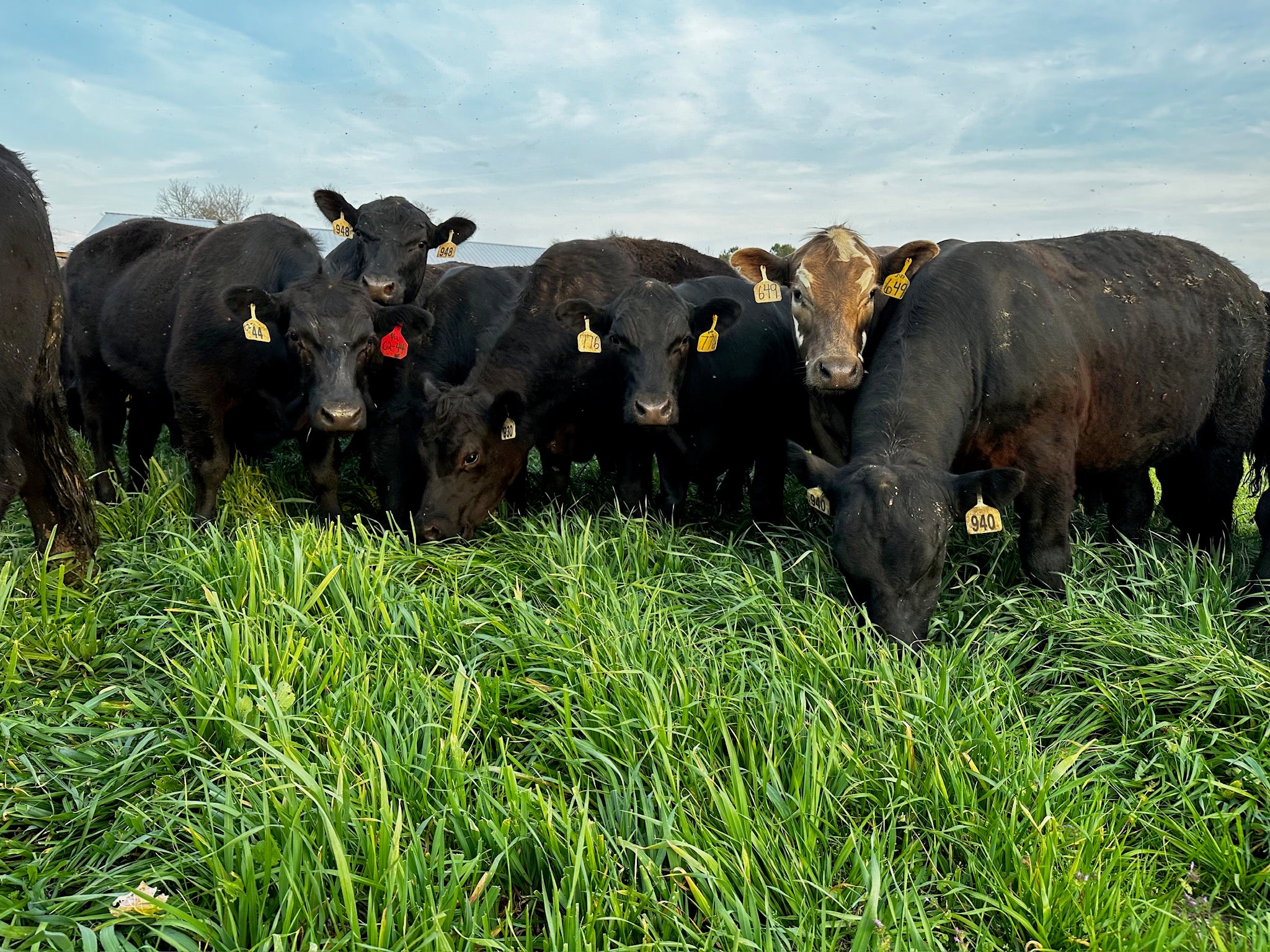
What does “100% grassfed” actually mean?
100% Grassfed Beef is raised from livestock that begins its first stage of life nursing and grazing, after weaning our cattle are on pasture eating grass, hay or baleage depending on what the season warrants. That means no feedlots, ever!
Is there a difference between “grassfed” and “grass-finished”?
Grassfed is a general term that can also be inclusive of animals that have been grassfed and then grain finished. It is important to know the standards that a company follows to make a conscious food choice. You can feel confident that Hickory Nut Gap beef is 100% grassfed and 100% grass finished, never supplemented or fed grain.
Is grassfed beef more nutritious?
Yes — 100% grassfed beef is typically more nutrient-dense than conventional, grain-fed beef. Because our cattle spend their lives on pasture eating a natural diet of grasses and forage, the resulting beef often contains higher levels of omega-3 fatty acids, antioxidants, vitamins, and minerals, along with a more favorable omega-6 to omega-3 ratio.
At Hickory Nut Gap, we’re committed to going beyond assumptions — we measure nutrient density. As proud members of the Nutrient Density Initiative, we actively participate in nutrient density testing with Edacious, an organization pioneering tools to analyze the nutritional quality of food from farm to plate. This partnership helps us better understand how our regenerative, pasture-based practices translate into real nutritional benefits for you.
Is grassfed beef better for the environment?
Contrary to the narrative that beef is bad for the environment, regenerative practices actually help reverse climate change. That means that when farmers practice managed grazing, cattle keep the grasses healthy with deep roots that help with water retention, all which leads to greater biodiversity and the sequestration of carbon into mineral rich soils.
This is very different from the practices that take place on factory-style farms where hundreds if not thousands of cattle are kept in confinement. The cows are not grazing on the land, benefiting the soils, and allowing the environment to thrive in those situations, so naturally the toxic methane levels are having a negative impact.

